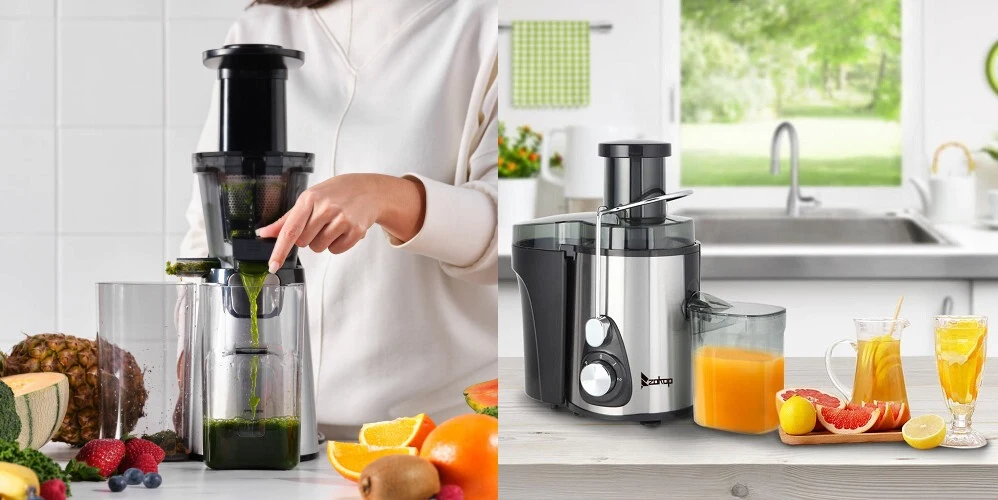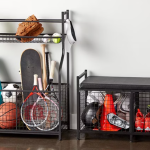If you’re on a journey toward healthier living, investing in the right juicer can make a world of difference. While traditional juicers have been around for decades, more people are now switching to slow juicers for their unique health benefits and efficiency. But what exactly is a slow juicer, and how does it differ from a regular juicer? Let’s break it down so you can make an informed choice for your kitchen.

Content
What Is a Slow Juicer?
A slow juicer, also known as a masticating juicer or cold press juicer, is a type of juicing machine that operates at a slower speed compared to traditional juicers. Instead of using high-speed blades, it gently crushes and squeezes fruits and vegetables to extract juice. This process retains more nutrients, enzymes, and antioxidants, giving you a healthier and richer juice.
Slow juicers typically run at 40–80 RPM (rotations per minute), which minimizes oxidation and preserves the natural taste and color of your ingredients. If you’ve ever noticed how fast juices separate or lose freshness, you’ll appreciate the longer shelf life that cold-pressed juices provide.
How Does a Slow Juicer Differ from a Regular Juicer?
To understand the difference, it helps to compare slow juicers with the most common type of juicers—centrifugal juicers.
1. Juicing Method
- Slow Juicer: Uses a pressing or grinding mechanism to extract juice at low speeds.
- Regular Juicer: Uses fast-spinning blades (up to 15,000 RPM) to shred fruits and vegetables.
2. Nutrient Retention
- Slow Juicer: Preserves heat-sensitive nutrients, vitamins, and enzymes due to reduced friction and heat.
- Regular Juicer: Generates more heat, which can destroy some beneficial compounds.
3. Juice Quality
- Slow Juicer: Produces thicker, smoother juice with less foam and longer shelf life.
- Regular Juicer: Creates frothy juice that may separate quickly.
4. Versatility
- Slow Juicer: Can handle leafy greens, wheatgrass, nuts (for nut milk), and even soft fruits.
- Regular Juicer: Works best for hard fruits and vegetables but struggles with greens.
5. Noise Level
- Slow Juicer: Operates quietly due to its slower speed.
- Regular Juicer: Noisier because of high-speed blades.
Benefits of Using a Slow Juicer
Switching to a slow juicer comes with numerous advantages that health-conscious individuals love:
- Higher Nutritional Value: By minimizing oxidation, you get juice packed with vitamins, minerals, and enzymes.
- Better Yield: Extracts more juice from the same amount of produce, reducing waste.
- Extended Freshness: Cold-pressed juice can stay fresh for up to 72 hours when refrigerated.
- Versatility in Recipes: Beyond juice, you can make nut milk, sorbets, and even baby food.
- Quieter Operation: Enjoy a peaceful morning routine without the loud noise of a regular juicer.
Who Should Choose a Slow Juicer?
A slow juicer is ideal for anyone who:
- Values nutrient-rich, cold-pressed juice over quick results.
- Enjoys juicing leafy greens, herbs, and wheatgrass.
- Wants to minimize food waste by getting maximum juice yield.
- Prefers juice that lasts longer without losing its freshness.
If you’re short on time and prefer immediate results, a centrifugal juicer may still work for you. However, if you want healthier, better-tasting juice with higher nutritional value, investing in a slow juicer is the smarter choice.
Final Thoughts
When choosing between a regular juicer and a slow juicer, the key differences lie in juice quality, nutrient retention, and overall versatility. Traditional juicers work quickly, but they often sacrifice freshness and nutritional value. In contrast, slow juicers extract juice more gently, delivering nutrient-rich, flavorful results that can stay fresh for several days. If you’re looking to elevate your health and kitchen experience, a slow juicer is a smart long-term investment. Explore high-quality options at Futuryhome to find the perfect fit for your lifestyle.

Gary is a home improvement blogger who strives to improve his life and the lives of others. He provides homeowners with helpful tips on how to renovate their homes. His goal is not only to provide easy-to-follow instructions, but also share his own personal experiences for those seeking guidance.


